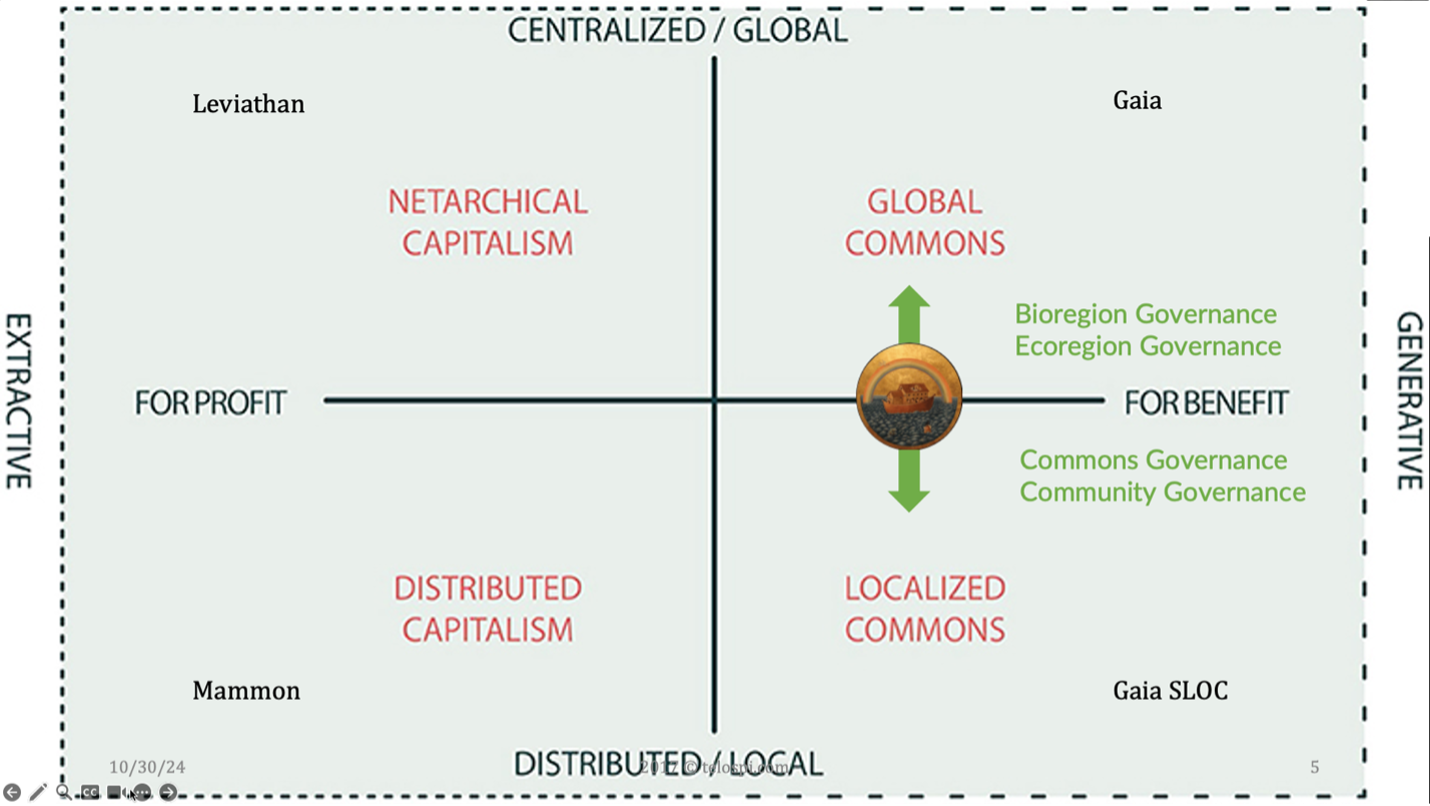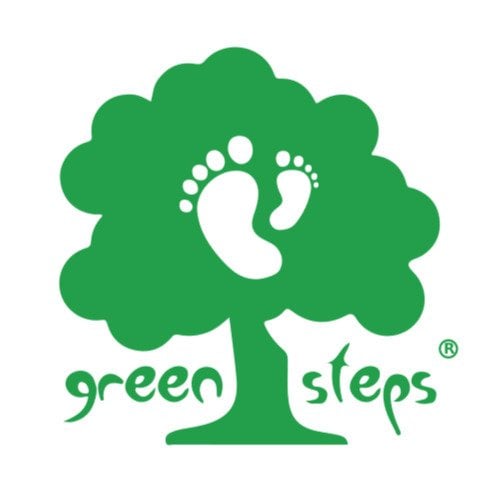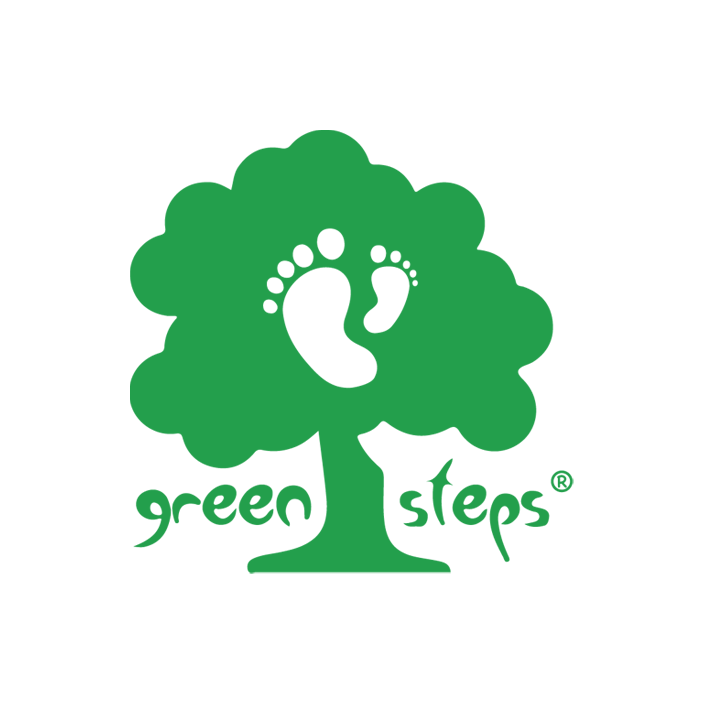Author:
Green Steps
Short summary:
Before we are born, the water in our mother's womb surrounds our body and keeps us alive. After we are born, we are immersed in a world characterized by water surfaces and bodies of water. Even if we have lost this direct contact with the element of water, we are still surrounded by it and dependent on it.

1. Project Concept
Water bodies are natural features that shape landscapes. Understanding their impact on and role in the ecosystems we call home is essential for sustainable management of local resources. Appreciating their ecosystem services and respecting their beauty helps to protect them as habitats and the basis of life.Understanding water bodies and their impact on our habitats can only come through direct, spatial experience. If we want resilient communities and regions, we need to give our children and youth the opportunity to understand the systemic role of water bodies and allow them to participate in conservation and restoration.
Formal education must establish and pursue an understanding of systems as a top priority. Only when people understand the ecosystems around them from a young age will they be able to devise solutions that enable sustainable management and coexistence. The school must therefore seamlessly extend to its neighborhood, to the entire community and the bioregion in which it is embedded.
This report describes an educational project which involved several stakeholders to achieve below targets of extending school premises to the neighborhood and municipality, support municipal governance in protecting nature and develop a slow tourism solution.

2. Project Description
º What: A walk across the municipality, as part of the first day of the Transition DACH Conference, which remains as a permanent educational format in town and is maintained and further developed by local stakeholders - especially pupils. Short term objective: Conference participants from D, A, CH should connect with the place and people and really arrive in Ober-Grafendorf; the municipality can present its solutions and strategies, but also speak honestly about obstacles - it functions as a learning place for the conference participants, the participating pupils, citizens and future visitors.
º How: Curated stops with info boards; led by people from the municipality/region who have really engaged with the place and enjoy talking about it. Relaxed atmosphere so that participants can also get to know each other. All stops are digitally mirrored in a web app with additional information in order to implement a gamified version (QR codes and geocaching) as an alternative to the guided mode for young people.
º When: September 20, 3-6 p.m., followed by Q&A with mayor and landowner L. Tacoli
.png)
3. Actors
º Mayor Rainer Handlfinger, Mike Klecker as facilitator and mediator
º Municipal employees (Leo Bollwein, Tamara Czuberny, Cornelia Brauner)
º Fridau estate management (Ludovico Tacoli)
º Ober-Grafendorf secondary school (55 pupils and teachers Daniela Wagner, Monika Wurm and Jessica Utz)
º Gatterer family (Dirndl show garden & farm store)
º Green Steps Team (Lukas Helebrandt, Gloria Corradini, Knut Wimberger und ESC Freiwillige)

4. Project Results
º Informal learning: The first walk was held on September 20, 2024 with 46 participants: https://ark.greensteps.me/event/gemeinde-spaziergang-ober-grafendorf
º Many participants said that the joint walk through the community was one of the best parts of the conference.
º The direct learning objective was achieved through the format. The participants got to know the municipality and its challenges in terms of climate change adaptation in just 3 hours.
º The indirect learning objective, to explain the role of the dominant water body for the climate, was also achieved: the regulation of the Pielach in the 1930s drained the landscape to gain agricultural land. What was seen as progress at the time is now seen as the destruction of landscapes and biodiversity. The renaturation of the Pielach can make a significant contribution to improving the regional climate.
º Participation: 55 pupils from MS Ober-Grafendorf, 2 companies, the municipality, an association and a bank were involved and cooperated to varying degrees in order to achieve the project goals.
º Groundbreaking pioneer project: A digital template was created to serve as a guide for interested municipalities to implement similar projects
A commons where people must talk about issues that directly affect them, such as water supply, transport routes or education, is the municipality of Ober-Grafendorf. Green Steps therefore prepared a walk through the municipal area between May and September in cooperation with municipal employees in order to give the participants a “different” conference experience. The environmental education format “Big Friendly Giants”, which has already been implemented several times in St. Pölten, was adapted for Ober-Grafendorf: instead of just mapping old trees, flagship projects and problem areas were recorded as sights of a different kind in an interactive community walk in consultation with mayor Rainer Handlfinger, landowner Ludovico Tacoli and town facility manager Leo Bollwein.
The result was a 4.5-kilometer walk that gave the conference participants a comprehensive understanding of the town in just three hours. 20 stops were equipped with interesting info boards explaining various topics of transformation such as regional economy, industrial landscaping, common areas, etc. using local points of reference. During the tour, visitors were able to gather multidimensional impressions and draw conclusions about experiences in their home community, which were discussed in a subsequent Q&A session with Rainer Handlfinger and Ludovico Tacoli.

4.1. Education and Tourism Strategy
Hold conferences as a walk. Extend the classroom to the community. Why? Neuroscience has shown for some time that frontal teaching - whether during a conference or in the classroom - does not create lasting memories and systemic relationships are difficult to understand. Hiking through ecosystems, on the other hand, conveys - if such hikes are prepared in a pedagogically meaningful way - a profound understanding of the system and, as in the case of Ober-Grafendorf, an aha moment when global climate change can be linked to the industrial landscaping of our homes over the last 100 years, and participants learn that they can take effective local measures - such as the renaturation of water bodies - to counteract climate change.
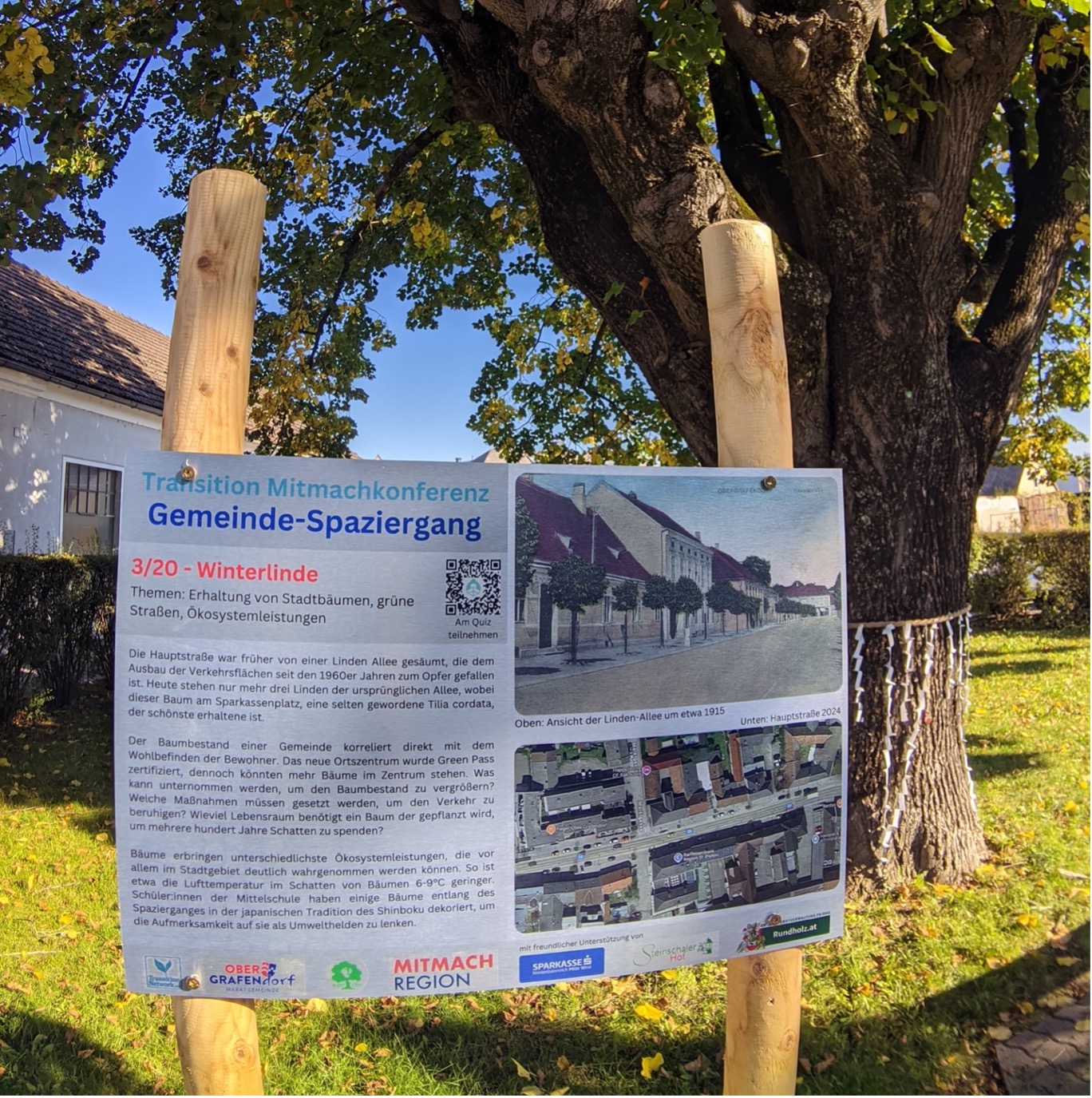
With the Mobile Campus 4.0 educational format, Green Steps extends the classroom and the conference room to the neighborhood, the community and the surrounding ecoregion. A modular concept makes it possible to map natural and cultural waypoints and connect them in interactive walks. ach waypoint can be provided with questions that participants can answer either in geocaching mode or by scanning QR codes. Daniel Wahl, the author of the book „Designing Regenerative Cultures“ recently gave an interview worth seeing about Reconnecting to Place for Planetary Health. The Mobile Campus 4.0 is a pedagogical strategy to anchor planetary health in education by turning the home into a place of learning.
In order to implement this strategy, the support of the municipality and other local partners is necessary. The municipality of Ober-Grafendorf not only opened its doors uncensored for this project, but also provided substantial support by making municipal employees available as experts and implementing the designed information boards to a high standard. The Fridau estate sponsored the wooden posts for the installation of the information boards and set them up. The community walk was planned by Green Steps thanks to a grant from Sparkasse NÖ Mitte.
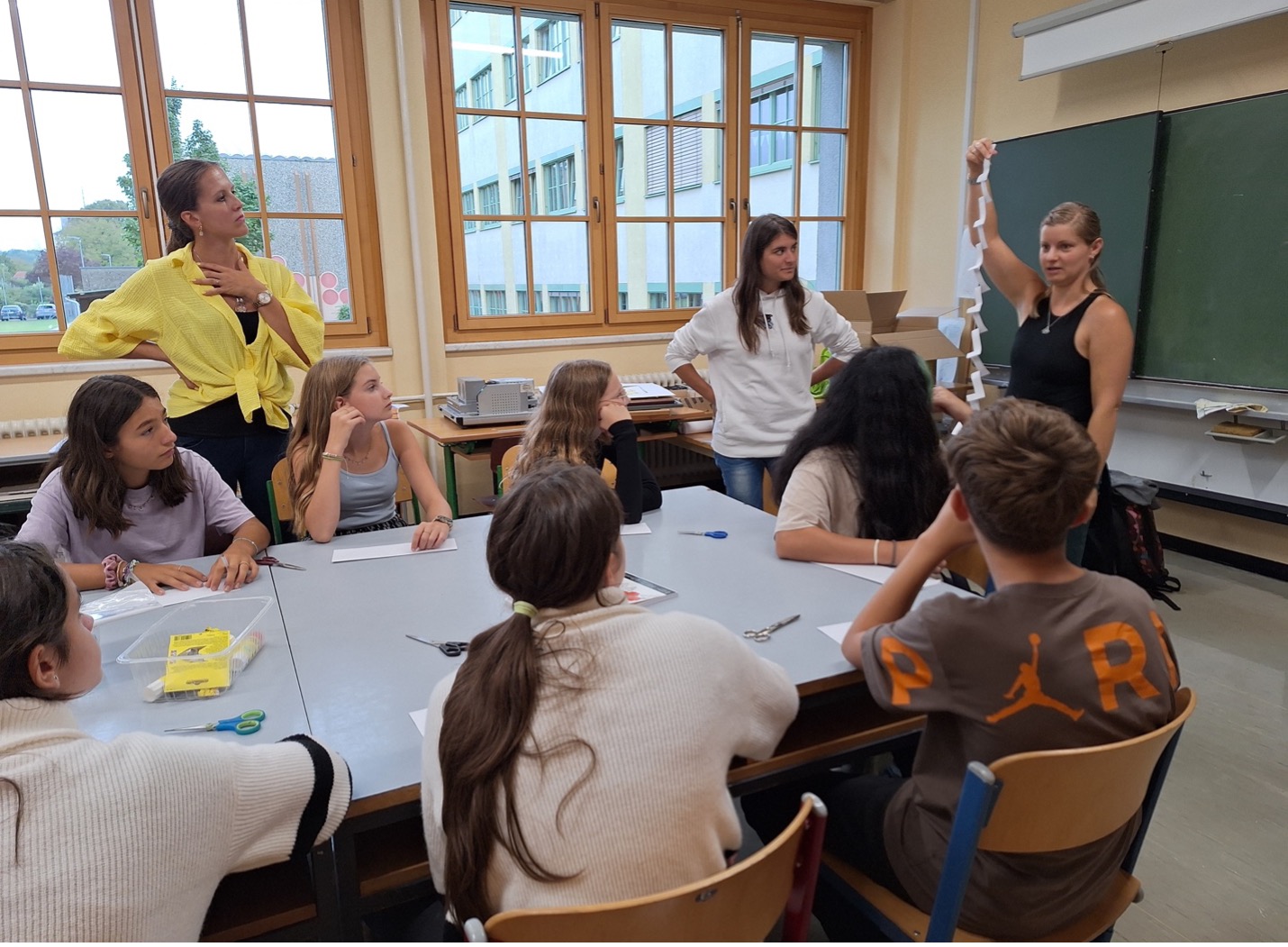
4.2. Creating Meaning and Participation for Pupils
A cooperation with the Ober-Grafendorf secondary school involved 55 pupils from 3a, 3b and 3c in the project, accompanied by teachers Daniela Wagner, Monika Wurm and Jessica Utz. They decorated several stations along the community walk by hanging trees with ropes and paper garlands and installing a dream wall on the community square. This also fulfilled a central aim of the project, namely to motivate young people to actively shape the community.
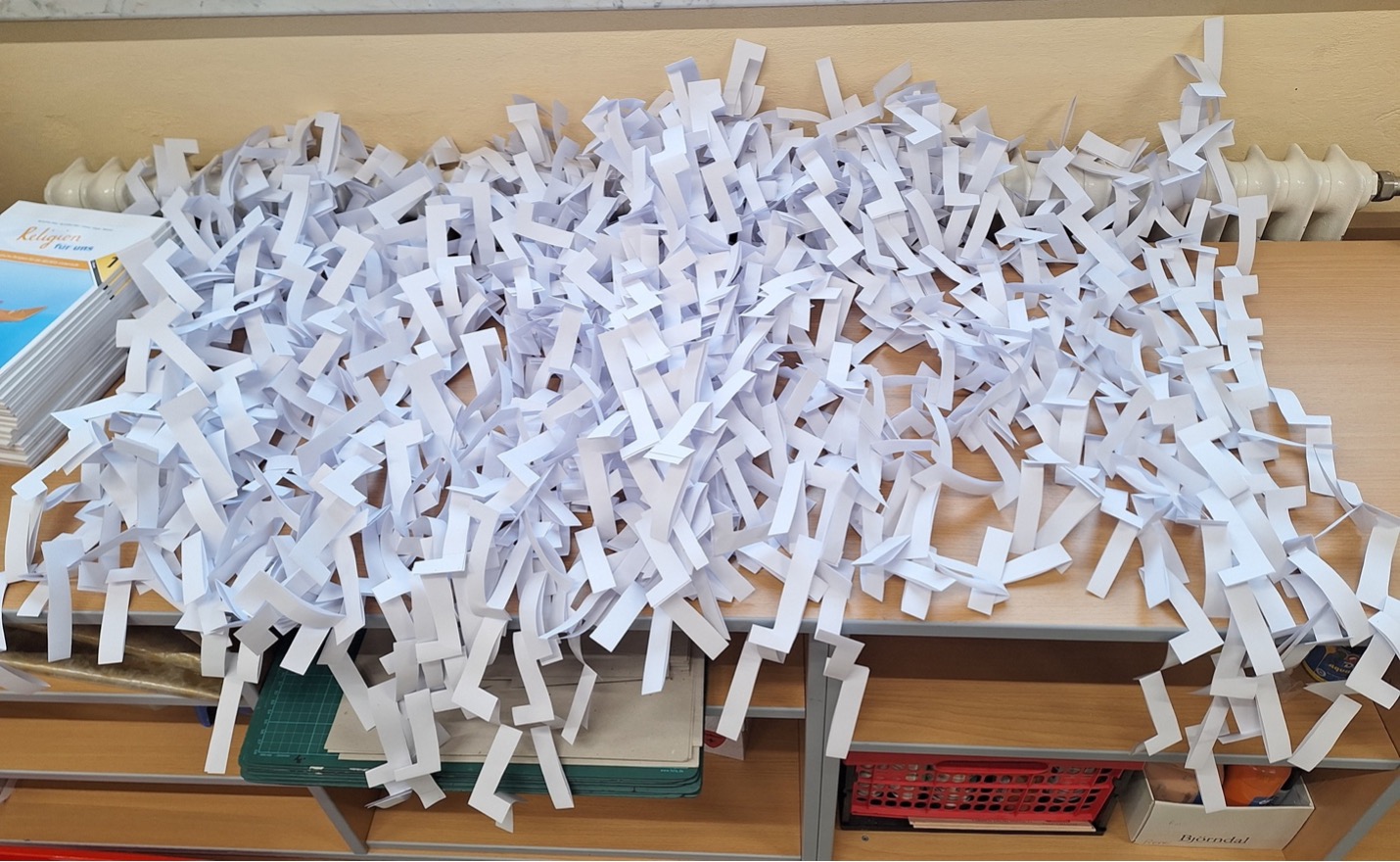
Together with the third grades of the middle school, the decoration of selected trees was prepared in four hours of art and design and distributed in the community. The pupils learned about a traditional method of decorating trees that originated in Japan: Shinboku. Ropes are wrapped around the trees and special paper garlands are hung on them. In addition, a dream wall was installed in the community square, the concept of which also comes from Japan: small wooden boards, so-called ema, are tied to a frame and passers-by (sometimes also pilgrims) leave their thoughts and wishes for a better world.
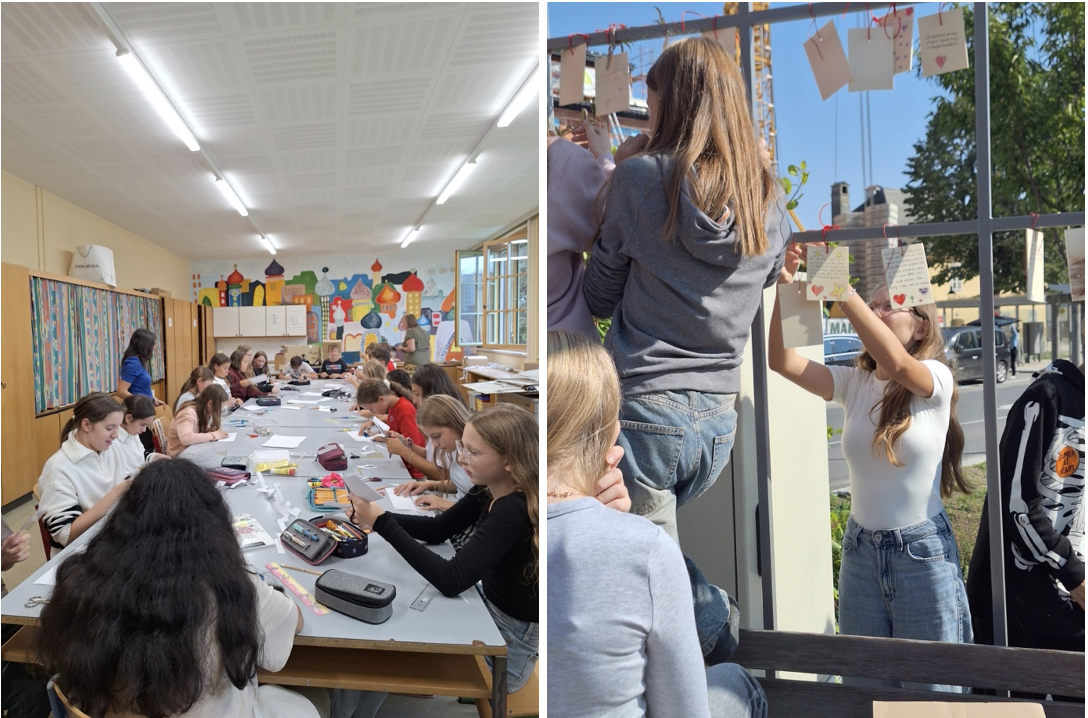
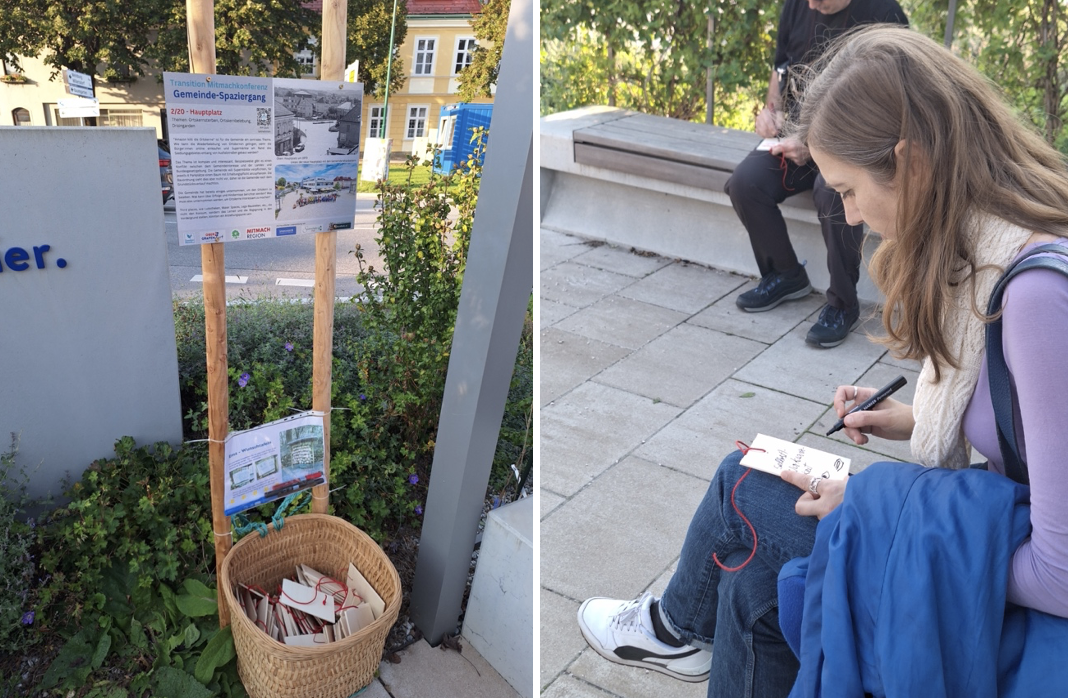
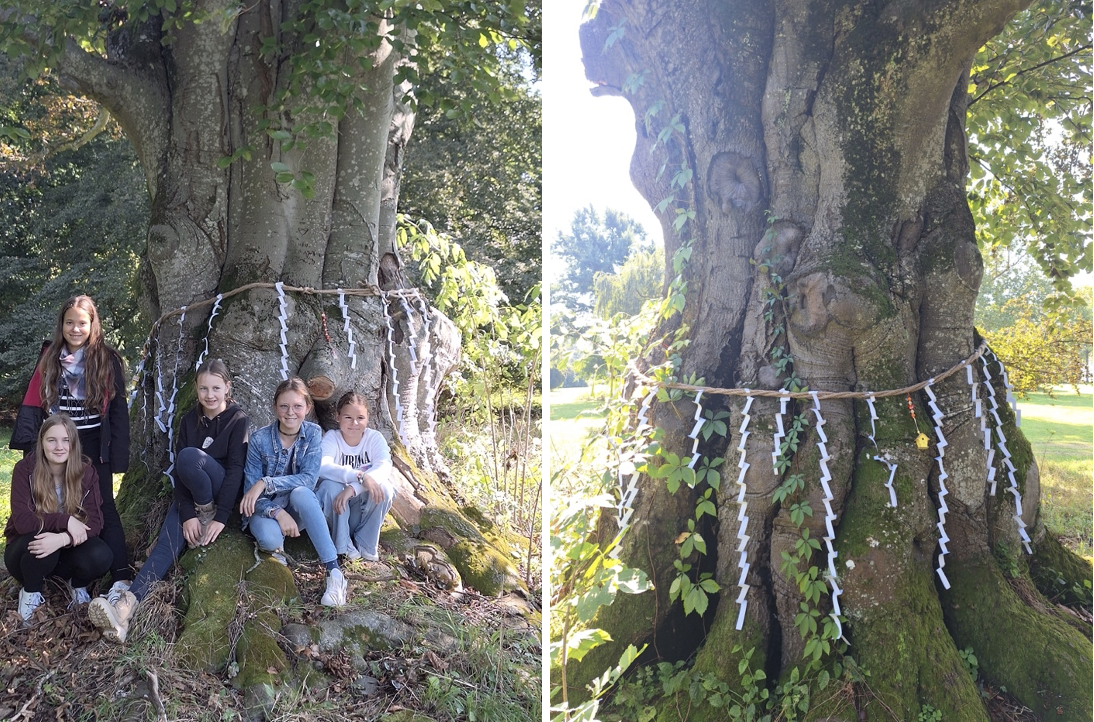
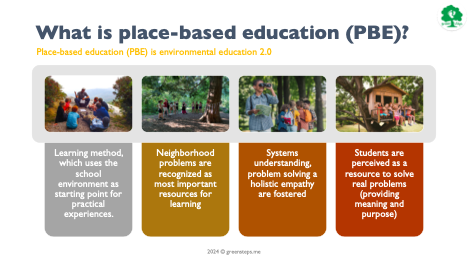
Especially when pupils are also allowed by the municipality to decorate these hiking trails or equip them with useful infrastructure such as lookout points and hides for observing birds and other wildlife, the project develops comprehensive participation in community design and development. In this direct engagement with the living spaces around us, we activate pupils as a valuable resource for tackling the problems at hand and educate them to become a generation of responsible, mindful and critically thinking citizens. We practice place-based education and empower young people to provide ecosystem services through their actions.
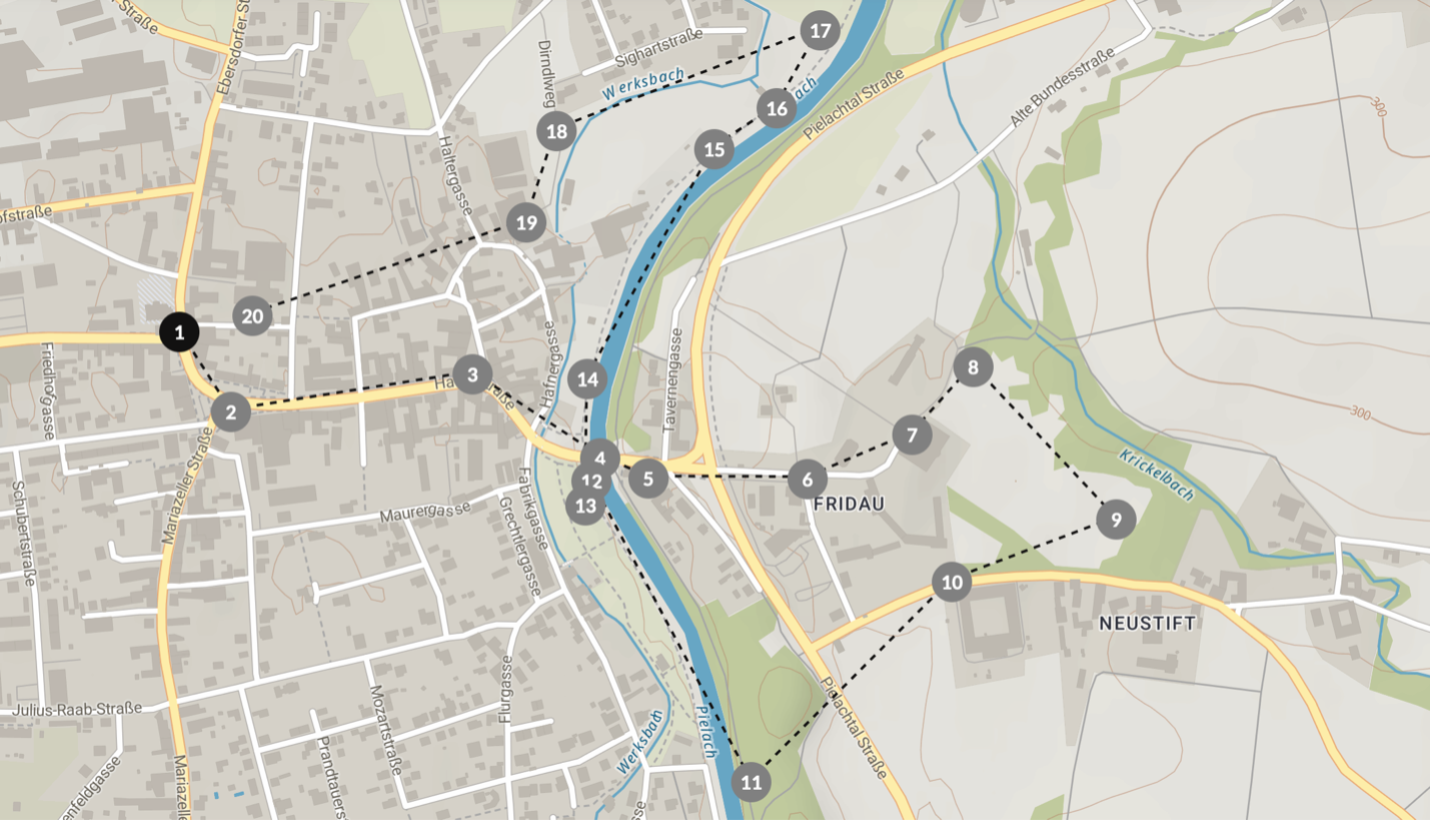
5. Gamification & Science Communication
The Green Steps ARK was designed to implement place-centered education in a decentralized way and is structured in learning communities that are located in ecoregions. Although the concept of ecoregions is little known in society, it is the scientifically based structure of our planet within which we must organize ourselves. Since the transformation of our education systems is seen by some renowned intellectuals as a key lever for bringing about change and overcoming the climate crisis, the meaningful support of experience-based learning in nature and about ecosystems represents a central pedagogical challenge.
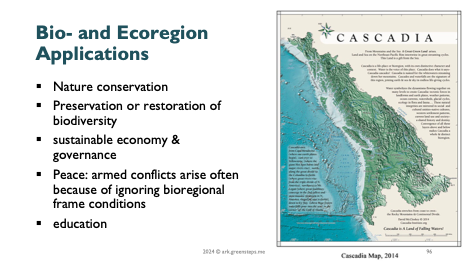
The mapping of learning progress in nature is not possible on conventional platforms, but the Green Steps ARK offers 15 informal Learning Paths on which a wide variety of learning experiences can be recorded. In particular, the community walk was mapped on the ARK because it allows the mapping of Points of Interest (POIs) and therefore makes bioregional learning practicable within municipal territories.
The tension between global commons and local commons is reflected at the ARK in a unique way. On the one hand, decentralized learning locations are supported by a wide variety of tools, while on the other, the structure of the ecoregions merges into a global commons that enables supra-regional organization and decision-making. The graphic below, created by Michel Bauwens, illustrates the possible classification of technical solutions for overcoming the challenges of change in four quadrants. For-profit solutions such as facebook or bitcoin are on the left-hand side, while non-profit solutions such as wechange and the ARK are on the right.
When choosing tools that reshape learning and communication, Zachary Stein's 5 advice should be heeded: Let's not forget that modern learning science, which is ignored in the development of most educational technologies, tells us that learning is optimal when it involves sustained interpersonal relationships, emotional connections, embodiment, and dynamic interactive hands-on experiences. Based on the best evidence about the dynamics of learning, educational technologies should bring people together away from screens, rather than isolating them alone in front of screens. Technologies should help us personalize learning and provide universal access to information through useful, well-organized and curated content. They should not be the main place of attention or the main source of interaction and instruction.
